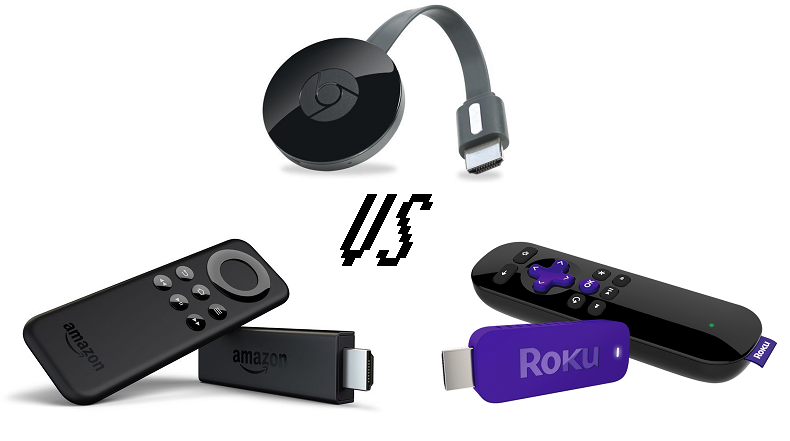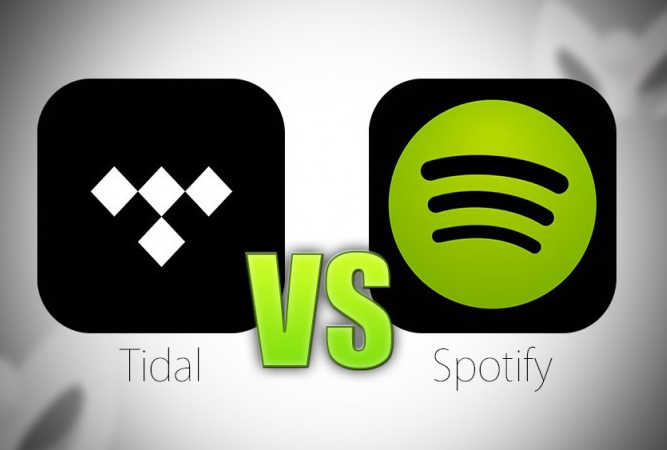Roku vs Chromecast: Which is Better Overall and Why?

Roku vs Chromecast: Which is better? Roku is forever tweaking its product line. In 2017, Roku launched new hardware, which was done to simplify its lineup. However, the company’s list of gadgets has ballooned afresh with the reintroduction of the Roku Premiere.
Today, there are six devices that you could honestly consider to be a direct competitor to Chromecast. They are the Roku Express +, Roku Express, Roku Premiere, Roku Premiere +, Roku Streaming Stick, and Roku Streaming Stick +.
The only Roku product that isn’t a Chromecast opponent is the Roku Ultra. This is a set-top box first then a dongle. As such, it will not form a section of this article.
Let’s talk about the six Roku products and contrast them to the Chromecast over a few key fields.

Roku vs Chromecast: Cost
The cheapest of the six Roku products is the Roku Express; it takes $29. The most valuable device is the Streaming Stick +, which will set you back $59. That implies there’s only a $30 difference covering all six Roku dongle devices.
The standard Chromecast costs $35. That’s the same cost as a Roku Express + and just $4 cheaper than the re-released Roku Premiere. A Chromecast Ultra, which attaches 4K support, costs $69.
If you require to buy a Chromecast or a Roku so you can cut the cord, the narrow spread of prices means costs shouldn’t be a significant consideration. After all, the average cable bill in the US is more than $100/month; you could buy any of the models and still preserve money.
Chromecast vs. Roku: User Interface
The most important difference between Chromecasts and the various Roku products is the user interface.
Roku devices run Roku OS. There’s an on-screen interface with channels, a settings menu, a store, and search functionality.
Chromecasts do not offer an on-screen interface. They’ll mirror your phone, tablet, or computer system screen on the TV.
Chromecast vs. Roku: Connections
All the devices connect to your television through an HDMI port.
The only exception is the Roku Express +. In extension to HDMI connectivity, it also offers composite A/V ports. If you have an older TV that doesn’t have HDMI ports, the Express + is the only device that will act for you.
Chromecast vs. Roku: Picture Quality
Three Roku products—the Express, Express +, and Streaming Stick—only give standard 1080p HD video. The other three devices—the Premiere, Premiere +, and Streaming Stick +—all offer 4K video and a huge dynamic range (HDR).
Of the two Chromecast products, only the more costly Chromecast Ultra supports 4K.
Before you run off and buy a 4K model, pause and think. Firstly, does your TV even support 4K? It’s not yet commonplace across mid-and low-end products.
Secondly, do you watch 4K content? Remember, many common streaming services will charge you more if you want to stream in 4K.
For instance, the cheapest Netflix plan is $7.99/month, whereas the 4K plan is $13.99/month. Even if you spend for 4K access, not all the shows and movies are available in 4K.
Chromecast vs. Roku: Controls
All Roku devices come with their remote control. The three lowest models have a simple remote; it lets you control your Roku and little else. The three premium models direct with a voice remote.
As you’d suppose, the voice remote lets you search for content verbally. However, it also carries a TV power button and volume controls, meaning you can dump your TV remote and have fewer gadgets lying around.
Roku also sells more powerful remotes individually. There’s the Enhanced Voice Remote (with a headphone jack for private listening) and the Gaming Remote (which covers specific gaming buttons).
Finally, you can download a Roku app on both Android and iOS. It lets you control your device and switch between the different Roku devices in your home quickly.
In contrast, Chromecast devices are controlled completely from your mobile device or computer. Because they cast your screen, any inputs you perform locally will be reflected in what you see on your TV.
Some apps—such as Netflix—are cast-enabled. You require to hit the in-app Cast button to start watching. Others, like Amazon Prime Video, are not cast-enabled.
Chromecast vs. Roku: Content
According to Roku’s literature, there are more than 500,000 channels you can install on your device.
Of course, a large percentage of these aren’t worth the time of day, but you’ll be capable to find all big hitters like Spotify, Hulu, Sling, Netflix, Amazon Video, and so on. Roku also has a near-endless collection of individual channels.
Chromecast devices are different. Not all apps are Chromecast-enabled, meaning you’ll sometimes have to cast your entire screen manually. If you’re streaming from mobile, it harms your battery life. Additionally, you won’t be capable to use your phone for anything else while the casting is taking place; it might not be a suitable arrangement for you.
Furthermore, some applications won’t successfully stream even if you cast your entire screen. If they rely on Silverlight, Flash, QuickTime, or VLC, they will not run.
Chromecast vs. Roku: Additional Features
Roku devices and Chromecasts both have some additional features that might help to tip the scales, depending on what’s important to you.
The Chromecast Ultra has an ethernet port. Using it should give a faster and smoother streaming experience. The only Roku device with an ethernet port is the Ultra, but as described previously, we haven’t included the Ultra in this showdown.
Roku devices are Miracast-enabled. Miracast is often praised as a replacement for HDMI. It means you can mirror Android and Windows screens right to your TV. Unhappily, you will not find Miracast on Apple devices.
Ultimately, since September 2018, Roku OS has supported Google Assistant. It means you can utilize any Google Assistant device, such as Google Home, to search for and play content on your Roku device. This is one approach to get Google on your Roku.
Chromecast vs. Roku: the Winner?
A lot of your conclusion will depend on which products you already have in your home, which ecosystems you are tied into, and how you plan to use your device.
Broadly speaking, if you’re watching for a platform-agnostic way to cut the cord, you should buy a Roku. Whereas if you want to stream the occasional TV show or movie to your TV, you should buy a Chromecast instead.


